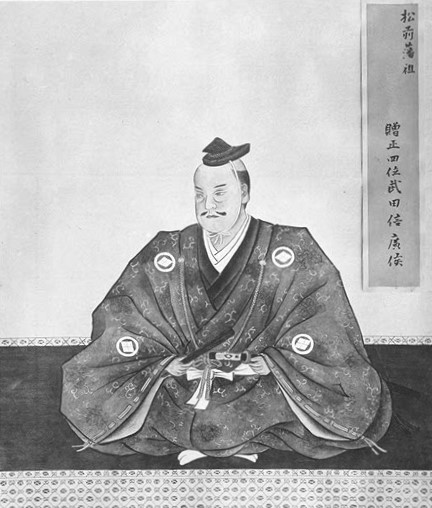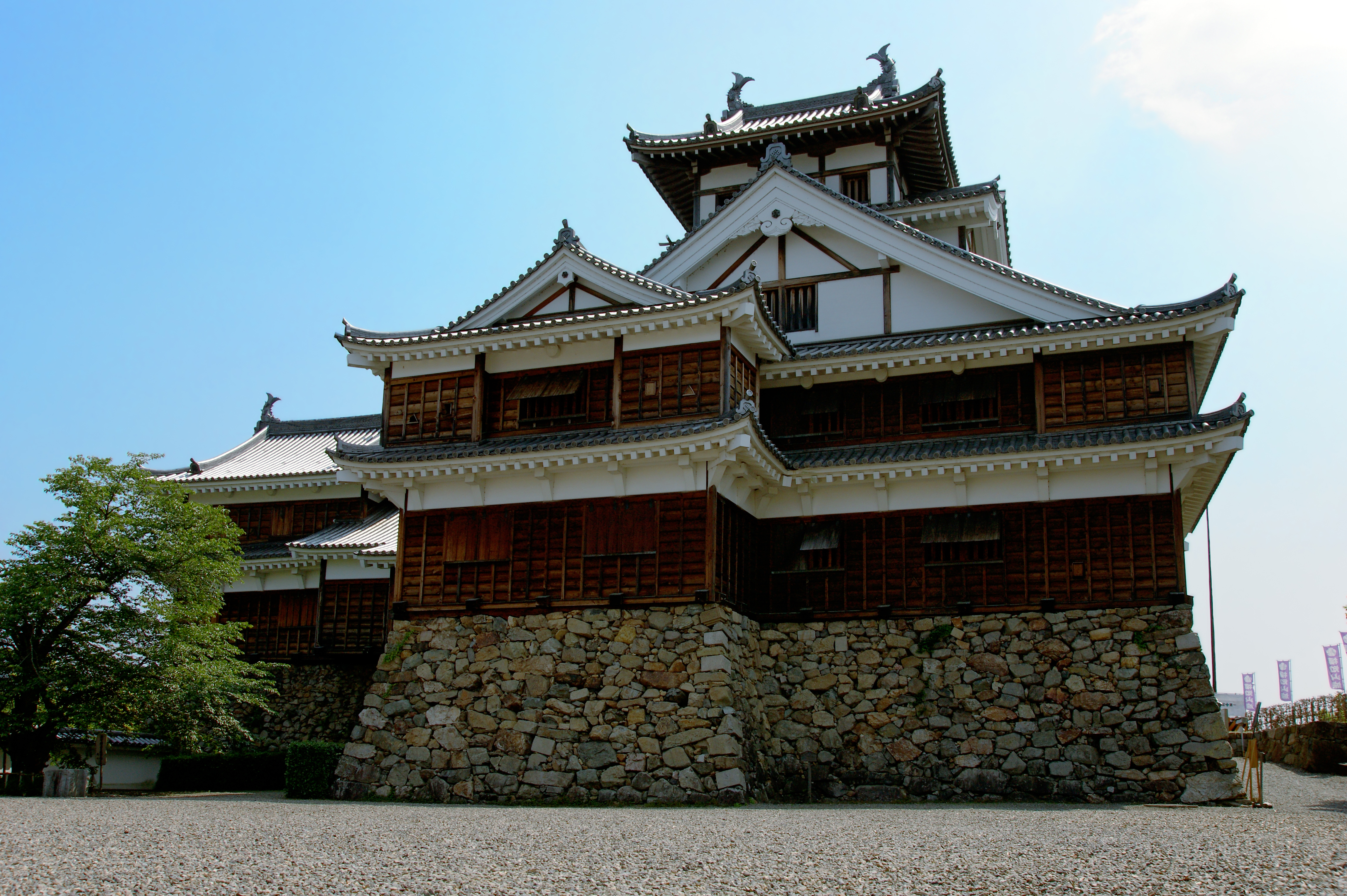|
Katsuyama Date
is the remains of a castle or fortified residence in Hiyama, Hokkaido, Japan. It is believed the castle was built by Takeda Nobuhiro Takeda Nobuhiro (武田 信広), also known as Kakizaki Nobuhiro (蠣崎 信廣) (1431 – 1494) was the ancestor of the Matsumae clan, and is celebrated for his role in suppressing the 1457 Ainu revolt of Koshamain. The adopted son of Takeda ... in the 15th century. The castle is now only ruins, just some remnants of moats and earthen walls. Its ruins have been protected as a National Historic Site, since 1977. Katsuyama Date was listed as one of the Continued 100 Fine Castles of Japan in 2017. Guidance facility of the castle is on site. References {{Continued Top 100 Japanese Castles Castles in Hokkaido Former castles in Japan ... [...More Info...] [...Related Items...] OR: [Wikipedia] [Google] [Baidu] |
Hiyama District, Hokkaido
is a district located in Hiyama Subprefecture, Hokkaido, Japan. As of 2004, the district has an estimated population of 21,896 and a density Density (volumetric mass density or specific mass) is the substance's mass per unit of volume. The symbol most often used for density is ''ρ'' (the lower case Greek letter rho), although the Latin letter ''D'' can also be used. Mathematical ... of 19.59 persons per km2. The total area is 1,117.57 km2. Towns and villages * Assabu * Esashi * Kaminokuni Notable place * Katsuyama Date - A castle ruin, was listed as one of the National Historic Site and Continued 100 Fine Castles of Japan. References Districts in Hokkaido {{Hokkaido-geo-stub ... [...More Info...] [...Related Items...] OR: [Wikipedia] [Google] [Baidu] |
Hokkaido
is Japan's second largest island and comprises the largest and northernmost prefecture, making up its own region. The Tsugaru Strait separates Hokkaidō from Honshu; the two islands are connected by the undersea railway Seikan Tunnel. The largest city on Hokkaidō is its capital, Sapporo, which is also its only ordinance-designated city. Sakhalin lies about 43 kilometers (26 mi) to the north of Hokkaidō, and to the east and northeast are the Kuril Islands, which are administered by Russia, though the four most southerly are claimed by Japan. Hokkaidō was formerly known as ''Ezo'', ''Yezo'', ''Yeso'', or ''Yesso''. Nussbaum, Louis-Frédéric. (2005). "Hokkaidō" in Although there were Japanese settlers who ruled the southern tip of the island since the 16th century, Hokkaido was considered foreign territory that was inhabited by the indigenous people of the island, known as the Ainu people. While geographers such as Mogami Tokunai and Mamiya Rinzō explored the isla ... [...More Info...] [...Related Items...] OR: [Wikipedia] [Google] [Baidu] |
Japan
Japan ( ja, 日本, or , and formally , ''Nihonkoku'') is an island country in East Asia. It is situated in the northwest Pacific Ocean, and is bordered on the west by the Sea of Japan, while extending from the Sea of Okhotsk in the north toward the East China Sea, Philippine Sea, and Taiwan in the south. Japan is a part of the Ring of Fire, and spans Japanese archipelago, an archipelago of List of islands of Japan, 6852 islands covering ; the five main islands are Hokkaido, Honshu (the "mainland"), Shikoku, Kyushu, and Okinawa Island, Okinawa. Tokyo is the Capital of Japan, nation's capital and largest city, followed by Yokohama, Osaka, Nagoya, Sapporo, Fukuoka, Kobe, and Kyoto. Japan is the List of countries and dependencies by population, eleventh most populous country in the world, as well as one of the List of countries and dependencies by population density, most densely populated and Urbanization by country, urbanized. About three-fourths of Geography of Japan, the c ... [...More Info...] [...Related Items...] OR: [Wikipedia] [Google] [Baidu] |
Japanese Castle
are fortresses constructed primarily of wood and stone. They evolved from the wooden stockades of earlier centuries, and came into their best-known form in the 16th century. Castles in Japan were built to guard important or strategic sites, such as ports, river crossings, or crossroads, and almost always incorporated the landscape into their defenses. Though they were built to last and used more stone in their construction than most Japanese buildings, castles were still constructed primarily of wood, and many were destroyed over the years. This was especially true during the Sengoku period (1467–1603), when many of these castles were first built. However, many were rebuilt, either later in the Sengoku period, in the Edo period (1603–1867) that followed, or more recently, as national heritage sites or museums. Today there are more than one hundred castles extant, or partially extant, in Japan; it is estimated that once there were five thousand. Some castles, such as the ones a ... [...More Info...] [...Related Items...] OR: [Wikipedia] [Google] [Baidu] |
Takeda Nobuhiro
Takeda Nobuhiro (武田 信広), also known as Kakizaki Nobuhiro (蠣崎 信廣) (1431 – 1494) was the ancestor of the Matsumae clan, and is celebrated for his role in suppressing the 1457 Ainu revolt of Koshamain. The adopted son of Takeda Nobukata, ''shugo'' (Governor) of Wakasa Province, he was later re-adopted by Kakizaki Sueshige. Some sources say he was originally of the Minabe clan. Life Nobuhiro was born in Aoi castle in Obama, the capital of Wakasa province, and was called Hikotarō as a child. Though he was the older child, he was passed over as his father's heir for his younger brother Takeda Kuninobu, who had already himself produced a son. Nobuhiro was said to have been adopted, not a true blood relative, and became estranged from the family. At the age of 21, he escaped Wakasa in the middle of the night, along with Takeda vassals Sasaki Shigetsuna, Kudō Sukenaga and three others. They made their way towards the shogunal residence, but found that Minabe M ... [...More Info...] [...Related Items...] OR: [Wikipedia] [Google] [Baidu] |
Agency For Cultural Affairs
The is a special body of the Japanese Ministry of Education, Culture, Sports, Science and Technology (MEXT). It was set up in 1968 to promote Japanese arts and culture. The agency's budget for FY 2018 rose to ¥107.7 billion. Overview The agency's Cultural Affairs Division disseminates information about the arts within Japan and internationally, and the Cultural Properties Protection Division protects the nation's cultural heritage. The Cultural Affairs Division is concerned with such areas as art and culture promotion, art copyrights, and improvements in the national language. It also supports both national and local arts and cultural festivals, and it funds traveling cultural events in music, theater, dance, art exhibitions, and film-making. Special prizes are offered to encourage young artists and established practitioners, and some grants are given each year to enable them to train abroad. The agency funds national museums of modern art in Kyoto and Tokyo and The National ... [...More Info...] [...Related Items...] OR: [Wikipedia] [Google] [Baidu] |
Continued 100 Fine Castles Of Japan
The is a list of 100 castles, intended as a sequel of 100 Fine Castles of Japan. The castles were chosen for their significance in culture, history, and in their regions by the in 2017. Hokkaidō region Tōhoku region Kantō region Kōshin'etsu region Hokuriku region Tōkai region Kansai region Chūgoku region Shikoku region Kyūshū region Okinawa region See also *List of castles in Japan *List of National Treasures of Japan (castles) The Japanese Sengoku period from the mid-15th to early 17th century was a time of nearly continual military conflict. Powerful military lords known as ''daimyōs'', such as Oda Nobunaga, Toyotomi Hideyoshi or Tokugawa Ieyasu, struggled to unify J ... Notes External linksJapan Castle Foundation {{Continued Top 100 Japanese Castles * Lists of castles in Japan ... [...More Info...] [...Related Items...] OR: [Wikipedia] [Google] [Baidu] |
Castles In Hokkaido
A castle is a type of fortified structure built during the Middle Ages predominantly by the nobility or royalty and by military orders. Scholars debate the scope of the word ''castle'', but usually consider it to be the private fortified residence of a lord or noble. This is distinct from a palace, which is not fortified; from a fortress, which was not always a residence for royalty or nobility; from a ''pleasance'' which was a walled-in residence for nobility, but not adequately fortified; and from a fortified settlement, which was a public defence – though there are many similarities among these types of construction. Use of the term has varied over time and has also been applied to structures such as hill forts and 19th-20th century homes built to resemble castles. Over the approximately 900 years when genuine castles were built, they took on a great many forms with many different features, although some, such as curtain walls, arrowslits, and portcullises, were ... [...More Info...] [...Related Items...] OR: [Wikipedia] [Google] [Baidu] |




